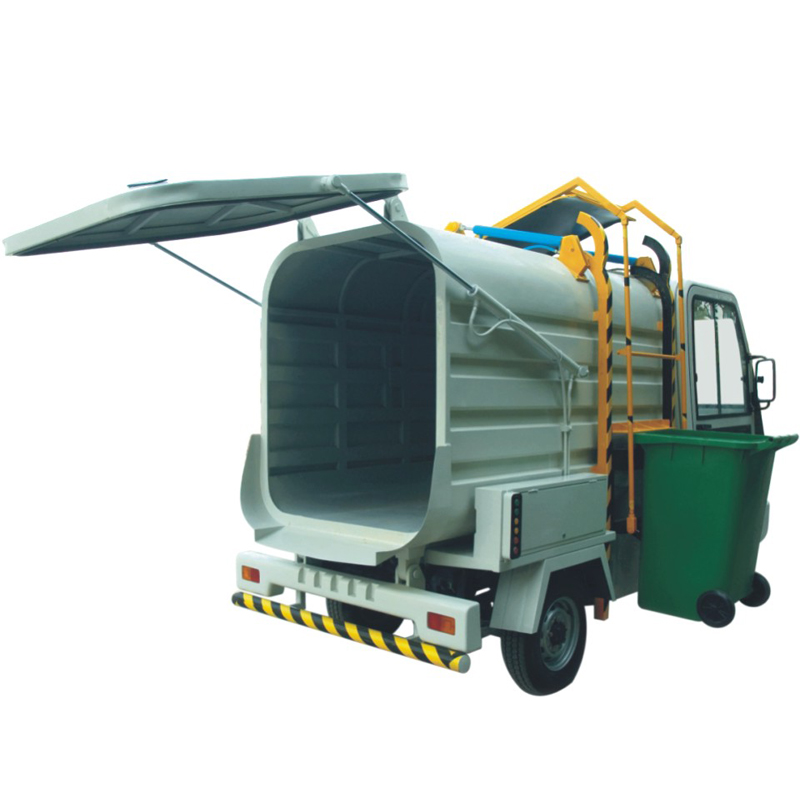
Wright indicates that while the technology is sophisticated, it’s not rocket science to retrofit a vehicle.Īny technician that can swap out a powertrain will be capable of installing the kit. Most of the repower kits will be assembled in Alameda and then shipped to other locations to be installed locally.
Electric garbage truck full#
At full strength, the company should be able to produce powertrains for as many as 5,000 trucks per year and employ up to 300 workers. The company has raised $32 million to date, and is now raising additional capital to get into volume production for its 110,000 square foot plant in Alameda, CA. The problem is scaling up production to meet demand. Getting the market demand for it up to critical mass is not a problem. With a compelling value proposition, Wright notes that the company is getting a lot of interest. You can save about $35,000 per year on fuel per truck and about $20,000 per year in maintenance. The running costs are much lower, both maintenance and fuel. It’s quite variable but they don’t get 200,000 miles out of them. They chew up brakes, engines, and transmissions. Wright observes that although it’s hard to get solid numbers for a Class 8 garbage truck, they have relatively short lifespans, given the excessive wear and tear (the stopping and starting is brutal on the lifespan of a garbage truck). They are looking at some $400,000 per truck just to make them emissions-legal.” Wright comments, “In CA we can take the emissions problem off the table and give you a four year payback.įor those facing a less dire situation, the economics are still pretty robust. If they had to sell, they would maybe get $100,000 and a new truck would be $500,000.

Electric garbage truck upgrade#
You either upgrade these trucks or take them off the road or sell outside California. The first 17 trucks out of their fleet are no longer emissions legal in California, because CARB made it retroactive. Wright comments that the customer was driven to take action as a result of standards promulgated by the state’s Air Resource’s Board (CARB).

The initial customer will be a local provider in California’s Marin County. And then there are the thousands of municipal fleets plying our country’s streets every day, with an estimated 110,000 refuse trucks in the nation. According to Wright, Waste Management alone has 18,000 trucks. The first Class 8 garbage truck will be picking up trash “in a few months,” and that’s a potentially huge target with an opportunity for vast improvements. The technology has been proven and the company is converting 25 more delivery vehicles. Wrightspeed’s CEO comments that the company is already out of the lab and has been on the road for the past 14 months with medium-duty FedEx delivery trucks. We have been using a lithium iron phosphate battery from A123. So you need a smaller amount of energy storage but higher power battery – that is a different chemistry. As long as you can find a gas station you can keep driving. However, with a range extended EV what you want is power.

You want maximum energy storage per dollar. If you build an EV, range is your Achilles heel and range anxiety is a problem, so you have to choose a battery giving you the greatest possible range and energy storage. It makes a difference if you are building an electric vehicle or a range-extended EV. The batteries deployed are not typical lithium-ion batteries. In this case, though, it’s a small gas turbine that supplies energy to the battery system, keeping the direct propulsion system all-electric and vastly extending the range. Much like the Chevy Volt – which uses a gas engine to supplement the initial battery range – the Wrightspeed system uses a back-up engine as well. However, perhaps the most interesting element of the powertrain is the gas turbine range extender generator. That powertrain upgrade includes battery packs that directly drive electric power to all four wheels, and a regenerative braking system so one doesn’t burn out brake pads as many as four times a year, as current trucks do.

The company essentially takes an existing garbage truck or medium-duty delivery truck and swaps out the entire powertrain with a more sophisticated and efficient replacement. Wrightspeed was created - and a unique assemblage of technology was developed – to address that challenge of stopping and starting and high energy consumption.
Electric garbage truck drivers#
Doing on average of 130 miles day with 1,000 hard stops, drivers are going full throttle, full brakes 1,000 times a day. They are burning 14,000 gallons a year, and chewing up their brakes every three months. Wright, one of the original co-founders of Tesla, believes that Class 8 garbage trucks represent a soft target for electrification, because the benefits are so significant.


 0 kommentar(er)
0 kommentar(er)
